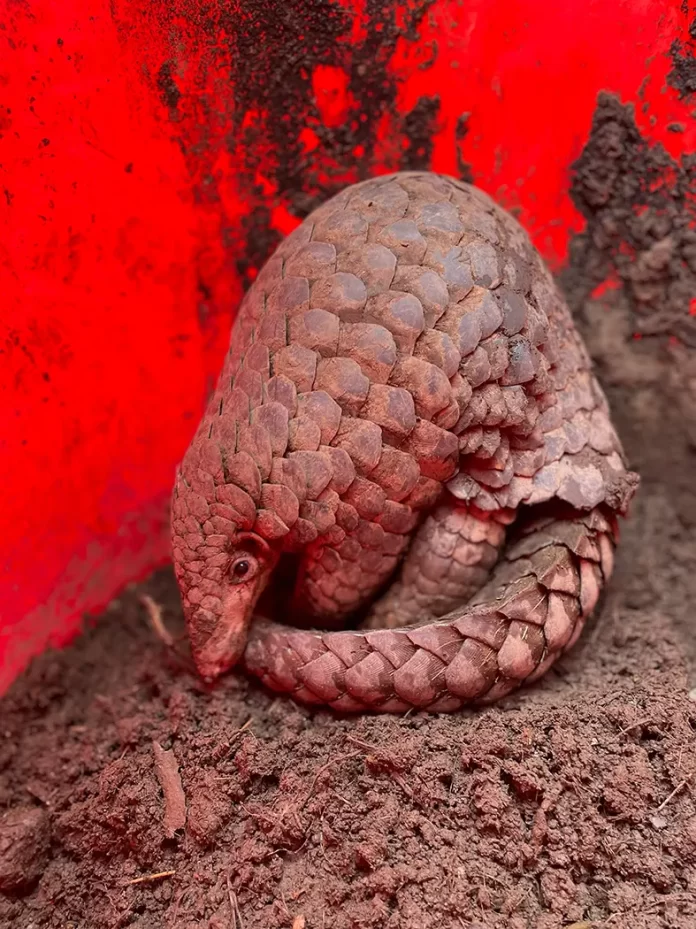[Bengia Ajum]
ITANAGAR, 9 Jan: Scientists of the Zoological Survey of India (ZSI) have discovered a new pangolin species from Arunachal Pradesh, genetically different from the usual Chinese and Indian pangolins found in India.
The new species, the Indo-Burmese pangolin, scientifically called Manis indoburmanica, is a distinct phylogenetic species of the Asian pangolin. Often confused with the Chinese pangolin, the newly discovered Indo-Burmese pangolin is 3.8% different at the genome level from the Chinese pangolin.
As per the findings of the ZSI scientists, this species diverged from the Chinese pangolin (Manis pentadactyla) approximately 3.4 million years ago. The findings have been published in the popular scientific journal Mammalian Biology, published from Germany, which is the official journal of the German Society for Mammalian Biology (Deutsche Gesellschaft für Säugetierkunde).
In March 2024, while working in Silluk village in East Siang district, Lenrik Konchok Wangmo, working with the ZSI, stumbled upon a pangolin caught by the villagers. The animal was sampled and photographed by her. After sampling, the animal was safely released in the Borguli range of Daying Ering Memorial Wildlife Sanctuary.
“The genetic analysis was done and we believe this species evolved in isolation during the Pliocene and the Pleistocene epochs, influenced by climatic and geological shifts. Its current distribution spans parts of Arunachal Pradesh, Assam, and possibly extends to Nepal, Bhutan, and Myanmar,” informed Dr Mukesh Thakur of the ZSI. The scientists of ZSI used cutting-edge genomic tools to analys mitochondrial genomes.
This new species belongs to the family Manidae. The colour of the scale is dark brown and dark olive brown with the facial colour of pinkish. Like other Asian pangolins, bristle-like hair is also present all around the body.
“The Indo-Burmese pangolin is distributed in the westernmost distribution of the Chinese pangolin range with its possible presence from Eastern Nepal, Northeast India, and northwest Myanmar. In India, it is found in West Kameng, Papum Pare, Upper Subansiri, East Siang, Upper Siang, Lower Dibang Valley, and Siang districts of Arunachal Pradesh and Kokrajhar district of Assam. The altitude range of Indo-Burmese pangolin is about 180 to 1830 m above sea level,” informed Dr Thakur.
Lenrik Konchok Wangmo said she is extremely excited to be part of a team that has discovered a new species. A native of Arunachal, she said, “This species adds a new dimension to pangolin conservation, highlighting the importance of protecting their habitats from threats like poaching and habitat degradation.”
The discovery of the Indo-Burmese pangolin underscores the urgent need to prioritise pangolin conservation.
“Pangolins are among the most heavily trafficked mammals globally,” said Dr Thakur. “Recognising this species as distinct highlights its vulnerability and the pressing need for collaborative conservation measures across its range,” he added.
ZSI Director Dr Dhriti Banerjee lauded the team’s efforts, stating, “This remarkable finding demonstrates the critical role of scientific research in uncovering biodiversity and informing conservation action. Protecting the Indo-Burmese pangolin is essential to safeguarding the ecological integrity of the Indo-Burma region.”


